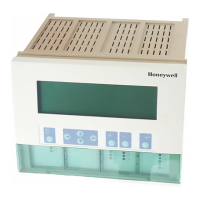As a client, Safety Manager supports the NTP protocol but also supports the PTP time
protocol, which is used for synchronization over its own SafeNet network.
Precision time protocol (PTP)
The IEEE-1588 Precision Time Protocol provides high-precision time with low overhead.
Unlike NTP, it is only a Local Area Network protocol, requiring a local time server, known
as an IEEE-1588 Grandmaster. PTP supports multiple Grandmasters for availability.
Typically, Grandmasters get their reference time from GPS, but can also get time from other
GPS devices using one of the standard coaxial cable protocol connections. Multiple units
from the same manufacturer may even share a GPS antenna. PTP is a UDP Multicast
protocol, so it adds some network traffic.
Time source hierarchy
The Series 8 controllers and interfaces have a time source hierarchy. When the better time
source becomes unavailable, they degrade to a less-accurate source. From highest to lowest
precision:
n
PTP (if enabled)
n
SNTP
n
CDA Server Protocol
Time source configuration
SNTP is used when the IP addresses of one or two NTP servers are configured in Control
Builder System Preferences. SNTP Server 1 is tried first. If unavailable, SNTP Server 2 is
tried. PTP is used when individual devices are configured in Control Builder to use it. Once
enabled, PTP is self-configuring.
PTP Grandmaster configuration notes
PTP defines synchronization profiles for various applications. We use the default profile. The
basic settings are synchronization every two seconds, and using multicast for round-trip-time
determination.
Planning your time hierarchy
Implementing a time strategy that is appropriate for a process control system involves using a
time hierarchy where the root of the hierarchy is the most reliable time source.
Windows domains, by default, implement a hierarchy of time distribution across the domain.
The domain controller that is the PDC Emulator is the node that synchronizes with a reliable
external source.
Time synchronization
Honeywell 2017 40
